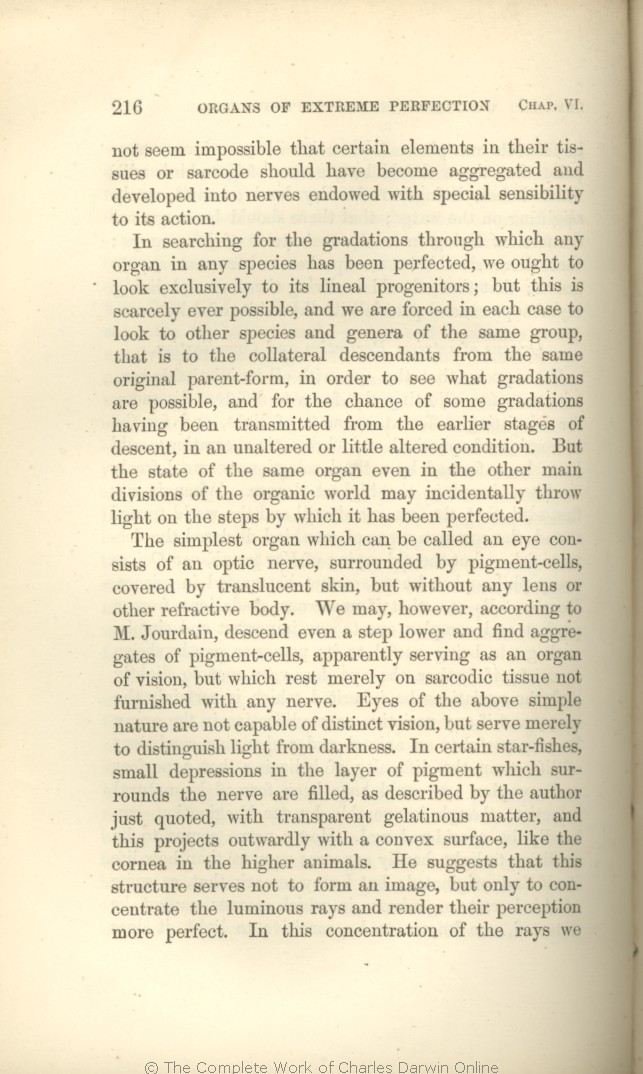In
searching | searching 1866 1869 1872 | | looking 1859 1860 1861 |
| through 1866 1869 1872 | | by 1859 1860 1861 |
| any 1866 | | an 1859 1860 1861 1869 1872 |
| progenitors; 1866 1869 1872 | | ancestors; 1859 1860 1861 |
| in each case 1859 1860 1861 1866 |
| OMIT 1869 1872 |
| other species and genera 1866 1869 1872 |
| species 1859 1860 1861 |
| original 1859 1860 1861 1866 | original 1869 1872 |
| from the earlier stages of descent, 1859 1860 1861 1866 |
| OMIT 1869 1872 |
| condition. 1859 1860 1866 1869 1872 | | condi- tion. 1861 |
| 1 blocks not present in 1859 1860 1861 1866; present in 1869 1872 | | But the state of the organ even
in distinct classes may incidentally throw light on the steps by which it has been perfected
in any one species.
|
| But the state of the same organ even 1866 |
| Amongst existing Vertebrata, we find but a small amount of gradation 1859 1860 1861 |
| other main divisions 1866 |
| structure 1859 1860 1861 |
| organic world may incidentally throw light on the steps by which it has been perfected. 1866 |
| eye, and from fossil species we can learn nothing on this head. 1859 1860 |
| eye (though in the fish Amphioxus, the eye is in an extremely simple condition without a lens), and from fossil species we can learn nothing on this head. 1861 |
|
|
The simplest organ which can be called an eye consists of an optic nerve, surrounded by
pigment-cells, | pigment-cells, 1866 | | pigment-cells 1869 1872 |
| covered 1866 1869 | | and covered 1872 |
| organ 1866 1869 | | organs 1872 |
| but which rest 1866 |
| but without any nerve, and resting 1869 |
| without any nerves, and resting 1872 |
| tissue 1866 | | tissue. 1869 1872 |
| furnished 1866 | furnished 1869 1872 |
| nerve. 1866 | nerve. 1869 1872 |
| merely 1866 | | only 1869 1872 |
| surrounds 1866 1872 | | sur- rounds 1869 |
| and this projects outwardly 1866 |
| projecting 1869 1872 |
| structure 1866 | structure 1869 1872 |
| perfect. 1866 | | easy. 1869 1872 |
|









